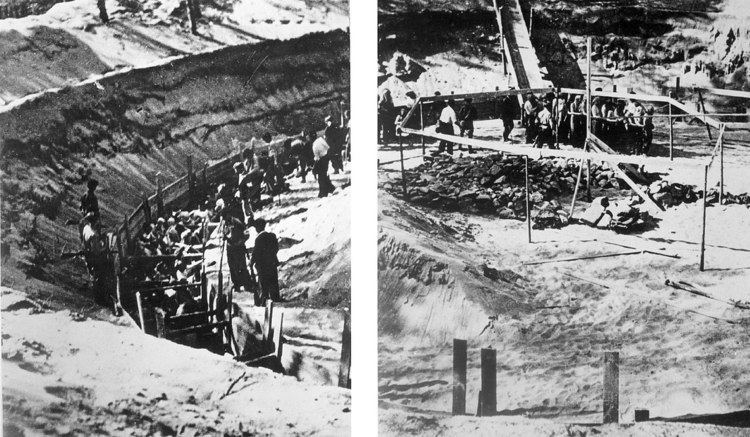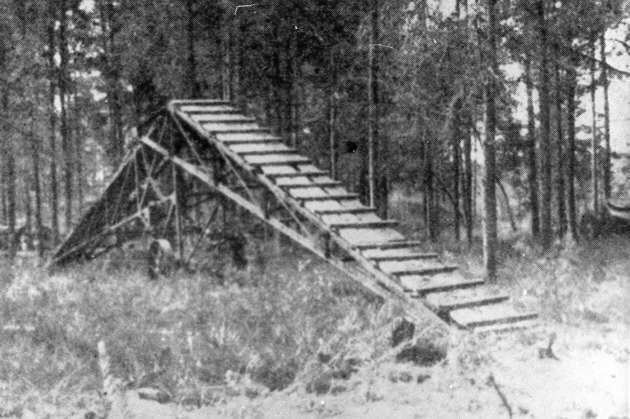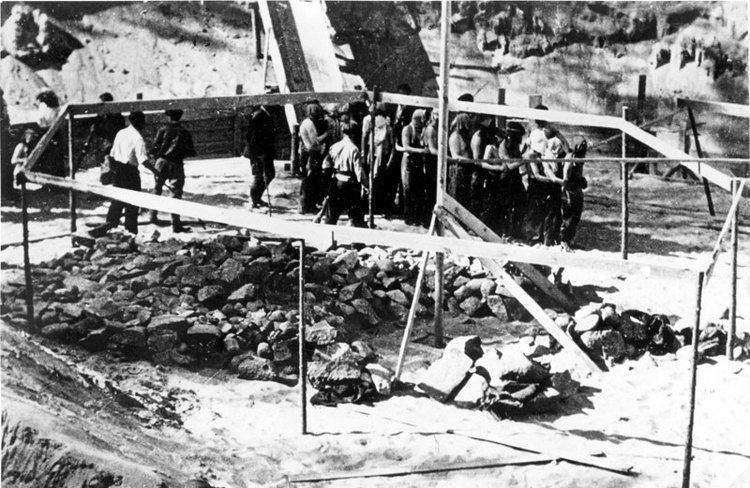 | ||
Date July 1941 - August 1944 Perpetrators SS EinsatzgruppeLithuanian Nazi collaborators | ||
How my mother escaped the ponary massacre
The Ponary massacre (Polish: zbrodnia w Ponarach) was the mass murder of up to 100,000 people by German SD, SS and Lithuanian Nazi collaborators, such as the Ypatingasis būrys units, during World War II and the Holocaust in Reichskommissariat Ostland. The executions took place between July 1941 and August 1944 near the railway station of Ponary, now known as Paneriai, a suburb of what is today Vilnius, Lithuania. Some 70,000 Jews were murdered in Ponary, along with between 2,000 and 20,000 Poles and 8,000 Russian POWs, many from nearby Vilnius. Lithuania and the Baltic States became the first place outside occupied Poland where the Nazis would mass execute Jews as part of the Final Solution. Out of 70,000 Jews living in Vilnius, only 7,000 (10%) survived the war.
Contents

Background

Following the Żeligowski's Mutiny, in accordance with international agreements ratified in 1923 by the League of Nations, the town of Ponary became part of the Wilno Voivodship (Kresy region) of the Second Polish Republic. The predominant languages in the area were Polish and Yiddish. After the Nazi-Soviet Invasion of Poland in September 1939, the region was taken over by the Soviets and after about a month transferred to Lithuania according to the Soviet–Lithuanian Mutual Assistance Treaty.

After the Soviet annexation of Lithuania in June 1940, the construction of an oil storage facility began near Ponary in conjunction with a military airfield. That project was never completed, and in June 1941 the area was overrun by Wehrmacht in Operation Barbarossa. The Nazis decided to use the large pits excavated for the oil storage tanks to dispose of bodies of the condemned locals.
Massacre

The massacres began in July 1941, as soon as SS Einsatzkommando 9 arrived in Vilna on 2 July 1941. Most of the actual killings were carried out by Ypatingasis burys (Special Platoon). On 9 August 1941, EK 9 was replaced by EK 3. In September, the Vilna Ghetto was established. In the same month 3,700 Jews were shot in one action, and 6,000 in another, rounded up in the city and walked to Paneriai. Most victims were stripped before being shot. Further mass killings, often aided by Lithuanian commandos of Ypatingasis burys, took place throughout the summer and fall. By the end of the year, about 21,700 Vilna Jews had been killed at Ponary, men, women, and children.

The pace of killings slowed in 1942, as ghettoised Jewish slave workers were appropriated by the Wehrmacht. As Soviet troops advanced in 1943, the Nazi units tried to cover up the crime under the Aktion 1005 directive. Eighty inmates from the nearby Stutthof concentration camp were formed into Leichenkommando ("corpse units"). The workers were forced to dig up bodies, pile them on wood and burn them. The ashes were then ground up, mixed with sand and buried. After months of this gruesome work, the brigade managed to escape through a tunnel dug with spoons on 19 April 1944. Eleven of the 80 who escaped survived the war; their testimony contributed to revealing the massacre.
Victims

The total number of victims by the end of 1944 was between 70,000 and 100,000. According to post-war exhumation by the forces of Soviet 2nd Belorussian Front the majority (50,000–70,000) of the victims were Polish and Lithuanian Jews from nearby Polish and Lithuanian cities, while the rest were primarily Poles (about 20,000) and Russians (about 8,000). According to Monika Tomkiewicz, author of a 2008 book on the Ponary massacre, 80,000 people were killed, including 72,000 Jews, 5,000 Soviet prisoners, between 1,500 and 2,000 Poles, 1,000 people described as Communists or Soviet activists, and 40 Romani people.
The Polish victims were mostly members of Polish intelligentsia – academics, educators (such as Kazimierz Pelczar, a professor of Stefan Batory University), priests (such as Father Romuald Świrkowski), and members of the Armia Krajowa resistance movement. Among the first victims were approximately 7,500 Soviet POWs shot in 1941 soon after Operation Barbarossa begun. At later stages there were also smaller numbers of victims of other nationalities, including local Russians, Romani and Lithuanians, particularly Communist sympathizers and members of General Povilas Plechavičius' Local Lithuanian Detachment who refused to follow German orders.
Commemoration
Information about the massacre began to spread as early as 1943, due to the activities and works of Helena Pasierbska, Józef Mackiewicz, Kazimierz Sakowicz and others. Nonetheless the Soviet regime, which supported the resettlement of Poles from the Kresy, found it convenient to deny that Poles or Jews were singled out for massacre in Paneriai; the official line was that Paneriai was a site of massacre of Soviet citizens only. This led some — including Polish Prime Minister Jerzy Buzek — to compare this to the Katyn massacre. On 22 October 2000, a decade after the fall of communism, in independent Lithuania, an effort by several Polish organizations resulted in raising a monument (a cross) to fallen Polish citizens, during an official ceremony in which representatives of both Polish and Lithuanian governments (Bronisław Komorowski, Polish Minister of Defence, and his Lithuanian counterpart), as well as several NGOs, took place.
The site of the massacre is commemorated by a memorial to the victims of the Holocaust, a memorial to the Polish victims and a small museum. The executions at Paneriai are currently being investigated by the Gdańsk branch of the Polish Institute of National Remembrance.
